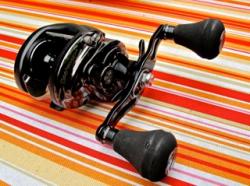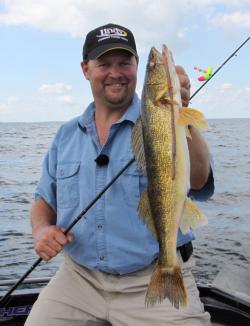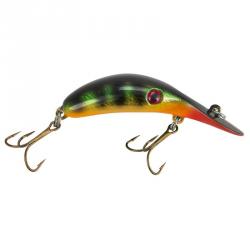Sportfishing Industry Presents the ICAST 2014 “Best of Show” Awards
from The Fishing Wire
Orange County Convention Center, Orlando, FL – – The world’s largest sportfishing trade show, the International Convention of Allied Sportfishing Trades (ICAST) wraps up it’s fifty seventh year this afternoon at the Orange County Convention Center in Orlando, Florida. More than 11,000 members of the sportfishing industry, including nearly 1,000 media outlets have been here to see the latest innovations in tackle, gear, accessories and apparel.
The single most important feature for ICAST exhibitors and attendees alike is the New Product Showcase. The New Product Showcase, sponsored by Fishing Tackle Retailer,embodies the sportfishing industry’s innovative and entrepreneurial spirit and rewards that ingenuity through the “Best of Show” new product awards competition.
This year, more than 700 tackle products and accessories were entered by 253 companies into 24 “Best of Show” categories in the New Product Showcase, all vying for the overall ICAST 2014 “Best of Show” award.
The Predator XL Kayak features a center console that can hold everything from a dry box to electronics and a MinnKota motor.
Making up a special section of ICAST’s 500,000-gross-square-foot show floor, the New Product Showcase provides special visibility for the industry’s latest innovations in gear, apparel and accessories.
Best of Show Awards
This year the Predator XL kayak by Johnson Outdoors Watercraft, was voted by buyers and media as the best product in both the boat category and the overall “Best of Show.”
This year’s New Product Showcase winner’s also included first-time ICAST exhibitor Helter Skeletons, Ltd.
“I congratulate all of the winners and everyone who participated in the New Product Showcase. Every year it’s amazing to see all the creativity and ingenuity our member companies use to add curiosity, excitement and discovery to the adventure of fishing,” said ASA President and CEO Mike Nussman. “I also thank Fishing Tackle Retailer for their sponsorship of this important event.”
The ICAST 2014 “Best of Show” awards, sponsored by Rapala, were presented on Wednesday, July 16, during the Chairman’s Industry Awards Reception at the Orange County Convention Center.
2014 ICAST New Product Showcase Award Winners
ICAST 2014 Overall Best of Show Category Winners
Best of Show – Freshwater Rod – Duckett Fishing
Product – Micro Magic Pro
Best of Show – Saltwater Rod – Shimano American Corporation
Product – Terez Stand Up
Best of Show – Fly Fishing Rod – G. Loomis, Inc.
Product PRO4x Short Stix
Best of Show – Freshwater Reel – Pure Fishing, Inc.
Product- Abu-Revo Beast
LLC’s TF-70 Sealed Fly Reel
Best of Show – Saltwater Reel – Pure Fishing, Inc.
Product – PENN Battle II Spinning
Best of Show – Fly Fishing Reel – 3TAND, LLC
Product – TF-70 Sealed Fly Reel
Best of Show – Hard Lure – SPRO Corporation
Product – BBZ-1 Rat
Best of Show – Soft Lure – Okuma Fishing Tackle Corporation
Product – Savage Gear 3D PVC Crab
Best of Show – Lifestyle Apparel – Pelagic, Inc.
Product – 4TEK Fish Finder Boardshort
Best of Show – Technical Apparel – STORMR
Product – Fusion Bib
Best of Show – Boating Accessory – Johnson Outdoors
Product – Minn Kota Ulterra Trolling Motor
Best of Show – Boats – Johnson Outdoors Watercraft
Product – Predator XL
Best of Show – Combo – Lew’s Fishing Tackle
Product – American Hero Baitcast Combo
Best of Show – Electronics – Johnson Outdoors
Product – Humminbird ONIX 8SI
Best of Show – Eyewear – Costa
Product – Hamlin – 580P Mirror Lenses
Best of Show – Fishing Accessory – Lit-Industries, LLC
Product – Lit Coolers
Best of Show – FishSmart Tackle – Cuda Fishing Tools
Product – Cuda Grip & Scale
Best of Show – Fly Fishing Accessory – Plastica Panaro SRL
Product – M2300 – Fly Caddy
Best of Show – Footwear – Columbia Sportswear
Product – Megavent PFG
Best of Show – Giftware – Helter Skeletons, Ltd.
Product – Authentic Skeletal Articulation
Best of Show – Kids’ Tackle – ZEBCO Brands
Product – ZEBCO Splash Combos
Best of Show – Line – Pure Fishing, Inc
Product – Berkley IronSilk
Best of Show – Tackle Management – ENGEL U.S.A.
Product – UC30-RH
Best of Show Terminal Tackle – Eagle Claw Fishing Tackle
Product – TroKar TK619
ICAST 2015 will be held at the Orange County Convention Center, Orlando, Florida, July 14 – 17, 2015.
For complete ICAST information, visit www.ICASTfishing.org






